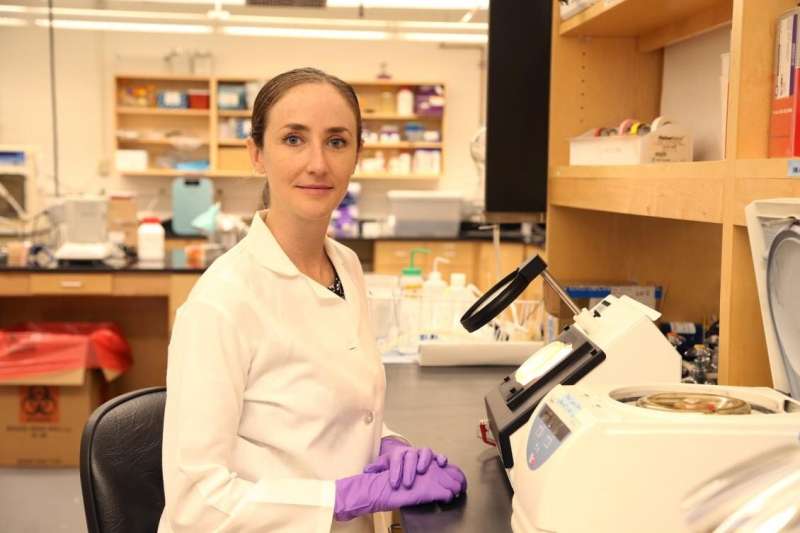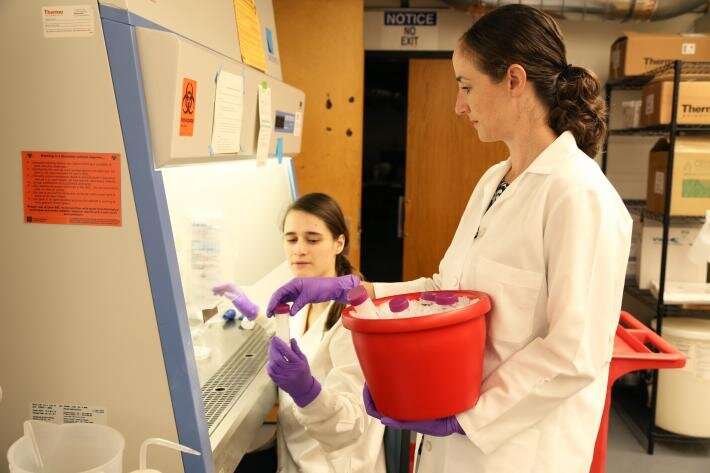A sustainable solution for safer drinking water

People who get their water from rural, small water systems are at a greater health risk of exposure to bacteria and other harmful pathogens, according to a recent study in the journal AWWA Water Science.
"A lot of small water systems in the United States struggle with disinfection compliance," said Natalie Hull, lead author of the study and assistant professor in The Ohio State University Department of Civil, Environmental and Geodetic Engineering. "These health-related disinfection violations disproportionately affect small systems, so we're interested in finding a more accessible, sustainable water treatment solution."
In 2015 alone, nearly 21 million Americans relied on community water systems that violated health-based quality standards.
The study, published in July, found that disinfection by ultraviolet (UV) light via light-emitting diodes (LEDs) may be a sustainable treatment option for small water systems.
"These LEDs we studied are really small, just like the ones in your phone or other electronics, except they emit UVC irradiation, which is germicidal and really effective at disinfection," Hull said. "Because of their small size and low power requirements, we're able to design reactors of all shapes and sizes, including for small systems."
Unlike the traditional chlorination process that many systems use today, UV disinfection requires no chemical additions, causes no taste or odor issues, has no harmful effect from overdosing and does not cause pipe corrosion.
For the study, the team conducted a year-long implementation of the first commercially available UV LED water treatment reactor in a small system in the mountains in Colorado. Measuring key indicator bacteria, researchers compared results from the UV LEDs to traditional chlorine disinfection. The UV reactor performed equally as well as the chlorination system for disinfection of the indicator organisms, meaning it could be a viable option for municipal water treatment.

"It's really exciting because it costs less than $25 in electricity to run this unit for the whole year," said Hull. "It was treating half a liter a minute—at that flow rate, that's not enough to supply water for a whole town yet, but it's more than enough water to supply an entire household for year."
According to Hull, water treatment processes in industrialized communities haven't changed much since the early 1900s.
"We are optimizing our treatments as we better understand emerging chemical pollutants, such as pharmaceutical chemicals, heavy metals, pesticides and plastics, and the impacts they can have on our health," she said. "We've developed more advanced treatments, but they focus a lot on combatting the chemicals in our water. An area that we're lagging behind in is looking at the microbiome of our drinking water treatment and distribution systems."
Next steps will include detailed analysis of water and tubing samples. Using state-of-the-art DNA sequencing techniques, her team will compare microbial communities in water and biofilm samples between the two disinfection practices: UV versus chlorine.
"Although some is known about how chlorine affects microbial communities, little is known about how UV affects microbial communities," she said.
The team also will determine how the microbial communities were affected over time by factors such as temperature and turbidity, or cloudiness, and how their results align with measures of indicator bacteria, like coliforms and E. coli, and overall microbial activity. Additionally, they will compare the high-throughput sequencing data typically provided by commercial labs to the data from a handheld DNA sequencer in their lab.
"Not only are we looking at a more accessible water treatment technology, but we're looking at a more accessible monitoring technology as well," she said.
More information: Natalie M. Hull et al. UV LED water disinfection: Validation and small system demonstration study, AWWA Water Science (2019). DOI: 10.1002/aws2.1148
Provided by The Ohio State University


















